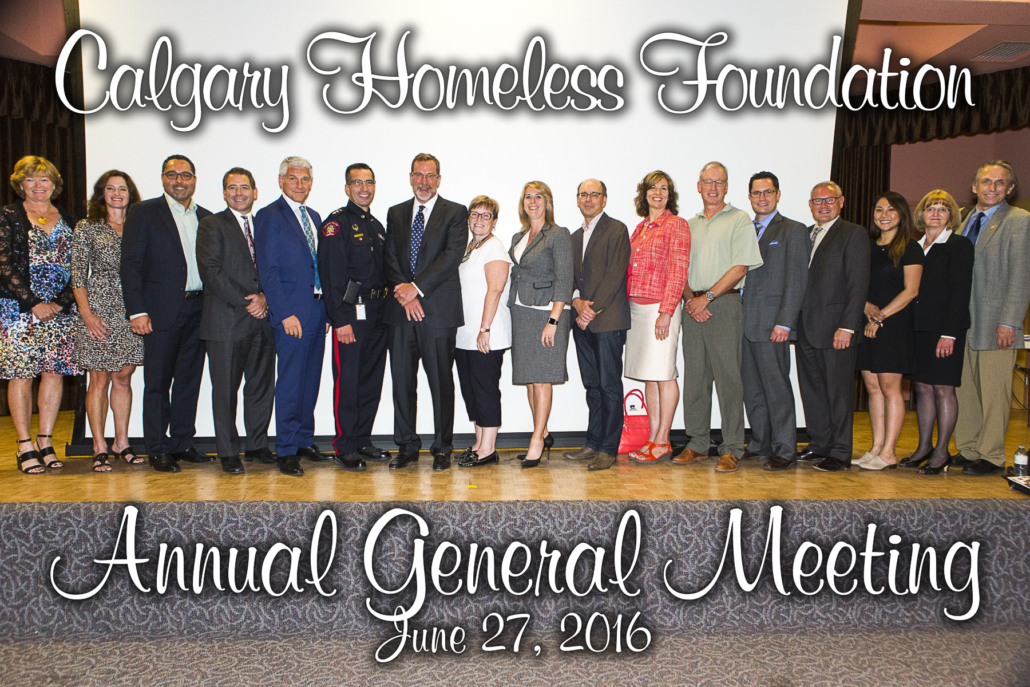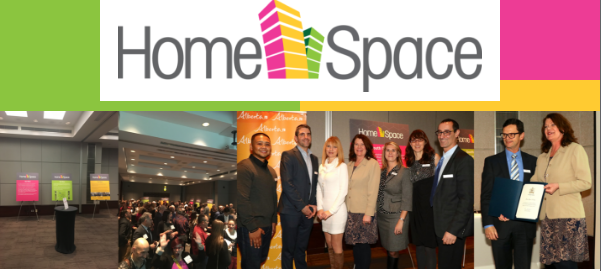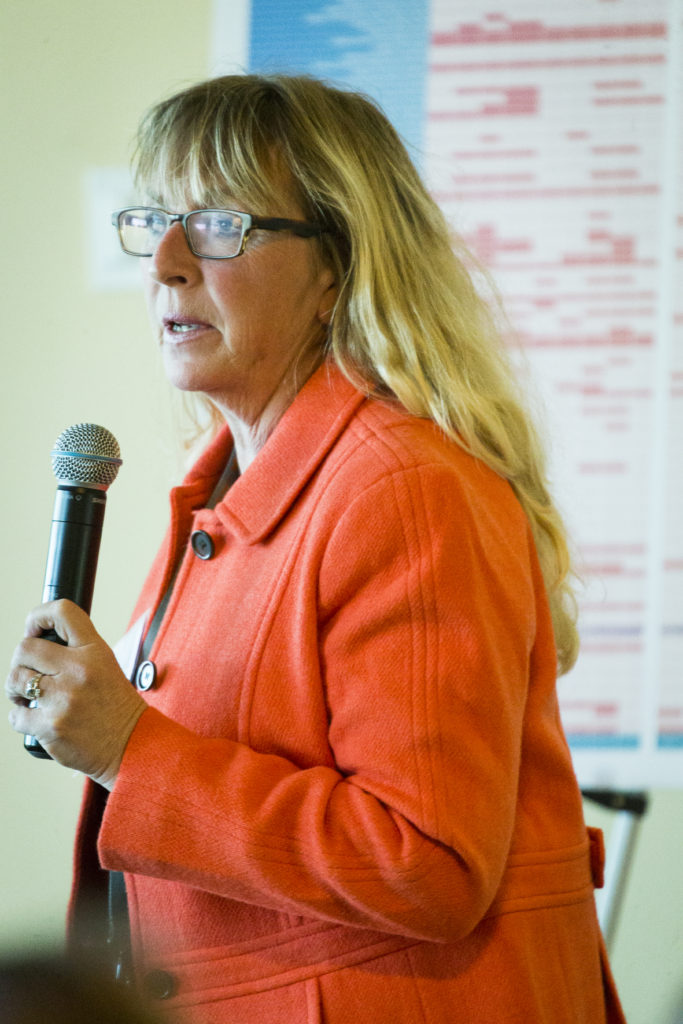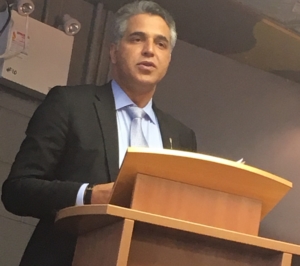
At CHF our board is an incredibly important group of volunteers. They bring their experiences, skills and insight to the table and help guide our work. Nine community members have recently joined our board, and we chatted with Diana Krecsy, our President and CEO, about each of them and what they bring to CHF. We also wanted to know more about the board’s innovative strategy of holding board meetings at member agencies.
What do you see as the vision for the board?
DK: It’s truly a board made up of caring, dynamic Calgarians with multiple talents and skills, people who bring their expertise to help the community solve homelessness and make Calgary better. They’re respectful of the hard work our agencies do but also want to challenge the status quo.
Tell us about a typical board meeting and why you hold them at other agencies.
DK: We’re the system planner, which means other agencies do the frontline service for people experiencing homelessness. We’re invited by an agency who serves this population directly to hold our board meeting in their space. The first 30 minutes of our meeting are with a staff or board member from the host agency, who present on the work of their agency. After our regular meeting, the board gets a tour of the agency.
DK: It helps us see the whole picture and understand the many complex aspects of the system. It also keeps the board motivated. We’re a governance board, but it’s important that we see that real people are in real crisis and everyone has a role to play. It shows respect for the work of the agencies and for the clients they serve.
What has the success been with holding these meetings at agencies?
DK: We’ve cried, we’ve laughed, we’ve learned. The feedback from the board members has been amazing. They’re overwhelmed by the need but also inspired by the work that’s happening.
Tell us a little about each of the new members who have joined and the skills or experience they bring.
DK: Gerald Chipeur – Gerald is a Partner at Miller Thomson. His legal background in indigenous rights and human rights and his skill set in terms of public policy will be hugely beneficial to this work.
Tracee Collins – She has experience serving as the president of several boards and in community service. She’s worked in non-profit, energy, and finance, so she’s community grounded and has a wealth of diverse knowledge.
Colby Delorme – Colby is President of NATION Imagination – The Aboriginal Gifting Co. He has expertise in Aboriginal business and he’s an entrepreneur who understands indigenous art and artists.
Ellen Dungen – She’s the President of EMD Consulting Ltd and has 20 years’ experience in the financial sector. She has a huge breadth of board experience and brings strong governance to the table.
Christine Hutchinson – Christine is lawyer specializing in Aboriginal law. She understands the structure with chiefs and councils and will assist with our indigenous strategy, helping enhance urban community life for the indigenous person.
Lourdes Juan – She is a quintessential entrepreneur of the future and a top 40 under 40 who has held CEO roles, but also has been involved in philanthropy and social service work in the community.
Dr. Ron Kneebone – Dr. Kneebone is a professor in the department of economics at University of Calgary and the Director of the Institute for Advanced Policy Research in the School of Public Policy. He’ll help us understand how homelessness happens on a systemic level, and is an expert on research, due diligence and public policy.
Alexandra Nuth – She’s the Senior Manager of Innovation at ATB and she is familiar with business models, consulting, corporate strategy, workforces and finances and will help us look at these in a new way.
Karen Young – Karen is the new incoming CEO of United Way. She’s a believer in visionary leadership, and how to do things differently and change the status quo to benefit the community. She really understands what respectful collaboration is all about.
I also want to recognize and honour our past board members who have now retired. They’ve contributed so much and really left a legacy of positive change in our community. They are the ones who inspire us to keep going.
*Previous board meetings have been held at the Calgary Drop-In & Rehab Centre, the Aboriginal Friendship Centre of Calgary, The Mustard Seed, Aspen Family, the Louise Dean Centre, United Way, CUPS, Centre for Newcomers, Calgary Public Library, Brookfield Residential, Bow Valley College and the Louise Dean Centre.

 Nick Falvo is Director of Research and Data at the Calgary Homeless Foundation. His area of research is social policy, with a focus on poverty, housing, homelessness and social assistance. Nick has a PhD in public policy from Carleton University. Fluently bilingual, he is a member of the editorial board of the Canadian Review of Social Policy/ Revue canadienne de politique sociale. Follow him on Twitter: @nicholas_falvo
Nick Falvo is Director of Research and Data at the Calgary Homeless Foundation. His area of research is social policy, with a focus on poverty, housing, homelessness and social assistance. Nick has a PhD in public policy from Carleton University. Fluently bilingual, he is a member of the editorial board of the Canadian Review of Social Policy/ Revue canadienne de politique sociale. Follow him on Twitter: @nicholas_falvo





 an Sabir, along with members of Calgary’s Homeless-Serving System of Care and its partners, celebrated the release of the Calgary Recovery Services Task Force Final Report and Recommendations. Held at Venue 1008 where the Task Force first began meeting in 2015, the event was attended by over 100 individuals including those with lived experience of homelessness, front-line staff, medical providers and agency executives.
an Sabir, along with members of Calgary’s Homeless-Serving System of Care and its partners, celebrated the release of the Calgary Recovery Services Task Force Final Report and Recommendations. Held at Venue 1008 where the Task Force first began meeting in 2015, the event was attended by over 100 individuals including those with lived experience of homelessness, front-line staff, medical providers and agency executives.
